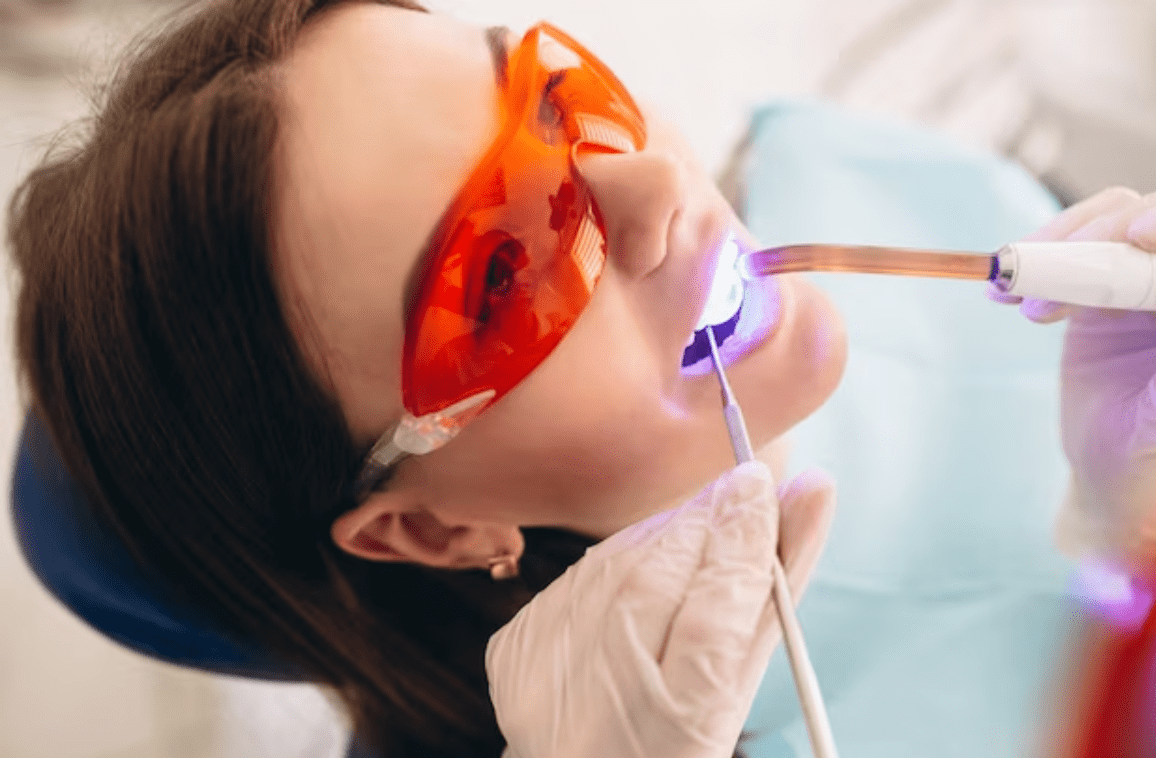Laser dentistry happens to be a modern dental treatment that uses lasers to treat various dental conditions. It was first commercially made use of in clinical dental practice for procedures involving tooth tissue in 1989.
Laser dentistry potentially does offer a more comfortable treatment option for a number of dental procedures that do involve hard or soft tissue compared to drills and other non-laser tools.
Laser dentistry is the use of lasers to treat a number of different dental conditions. In 1989, it became commercially usable in clinical dental practice for procedures that involved tooth tissue.
Laser dentistry potentially does offer a more comfortable treatment option for a number of dental procedures involving hard or even soft tissue as compared to drills and, no doubt, other non-laser tools.
LASER means “light amplification by the stimulated emission of radiation.” The instrument tends to create light energy in a very narrow as well as focused beam. This laser light does produce a reaction when it hits tissue, allowing it to remove or even shape the tissue.
There are two main types of procedures used for laser dentistry: hard tissue as well as soft tissue procedures. Hard tissue does refer to the teeth, and soft tissue refers to the gums.
Hard tissue lasers can, in fact, easily trim and reshape teeth as well as bones, while soft tissue lasers do, in fact, allow the gums to be cut or even contoured safely. Common hard tissue procedures do include cavity detection, tooth preparations, and dental fillings. Local anesthesia, as well as traditional drills, are not really required with laser treatments. Lasers can in fact destroy bacteria in a cavity, which can help the long-term health of a tooth.
Common soft tissue procedures include, of course, treating a “gummy smile,” crown lengthening, and treating tongue frenulum attachment, thus removing soft tissue folds from ill-fitting dentures without pain or sutures, among others.

Laser dentistry has several advantages over traditional dental treatments. It can make dental treatments more efficient, cost-effective, and comfortable. Lasers can detect cavities early by finding evidence of tooth decay. They can also, of course, treat hypersensitivity and gum disease and whiten one’s teeth. Lasers can also, in fact, remove benign tumors from the palate, gums, sides of the lips, and, of course, the cheeks via a pain- and suture-free method. Laser dentistry does offer a more comfortable treatment option for a number of dental procedures that involve hard or even soft tissue compared to drills and other non-laser tools.
It is worth noting that laser dentistry is not really all that suitable for all dental procedures. The dentist will in fact determine if laser dentistry is the right treatment for the patient, depending, of course, on one’s individual needs.
Types of laser dentistry
- Erbium lasers: A type of hard tissue laser that can cut through enamel, bone, and soft tissues.
- CO2 lasers: A type of soft tissue laser that can indeed remove soft tissue quickly and also precisely.
- Diode lasers: Another type of soft tissue laser that can indeed perform various gum surgeries and procedures.
- Nd-YAG lasers: A type of laser that can be used for periodontal therapy and also for root canal disinfection.
- Hard and soft tissue lasers: A type of laser that can be used for both hard as well as soft tissues, as well as for teeth whitening.
Conclusion
Laser dentistry is known for its benefits and is used by dentists.


